Abstract
The site and characteristics of gastrointestinal electrolyte loss were investigated in eight dogs with experimental cholera induced by orogastric administration of 6-hr broth cultures of Vibrio cholerae, strain Ogawa 395. In these animals, all electrolyte losses originated in the small bowel, predominantly from the jejunum and ileum. The bicarbonate concentration of the small bowel fluid showed a progressive increase from duodenum, where it was less than that of plasma, to the terminal ileum, where it was significantly greater than that of simultaneously obtained plasma.
Studies of the responses of chronic Thiry-Vella jejunal loops (five dogs) and chronic Thiry-Vella ileal loops (five dogs) to intraluminal challenge by cholera exotoxin demonstrated that all loops exhibited isotonic electrolyte loss for a 14-18 hr period after challenge. The bicarbonate concentration of fluid produced by exotoxin-challenged jejunal loops was not significantly different from that of plasma, whereas the ileal loops produced fluid with a bicarbonate concentration approximately three times that of plasma.
The effect of intraluminal glucose on the response of canine gut to cholera exotoxin was investigated by perfusion studies in 12 dogs with chronic Thiry-Vella fistulae. Intraluminal glucose significantly enhanced isotonic fluid absorption in both jejunal and ileal loops. The net effects of glucose on isotonic fluid absorption were equal before and after intraluminal administration of crude cholera exotoxin. These data suggest that cholera exotoxin causes gut electrolyte loss by a mechanism independent of that by which glucose enhances sodium absorption.
Full text
PDF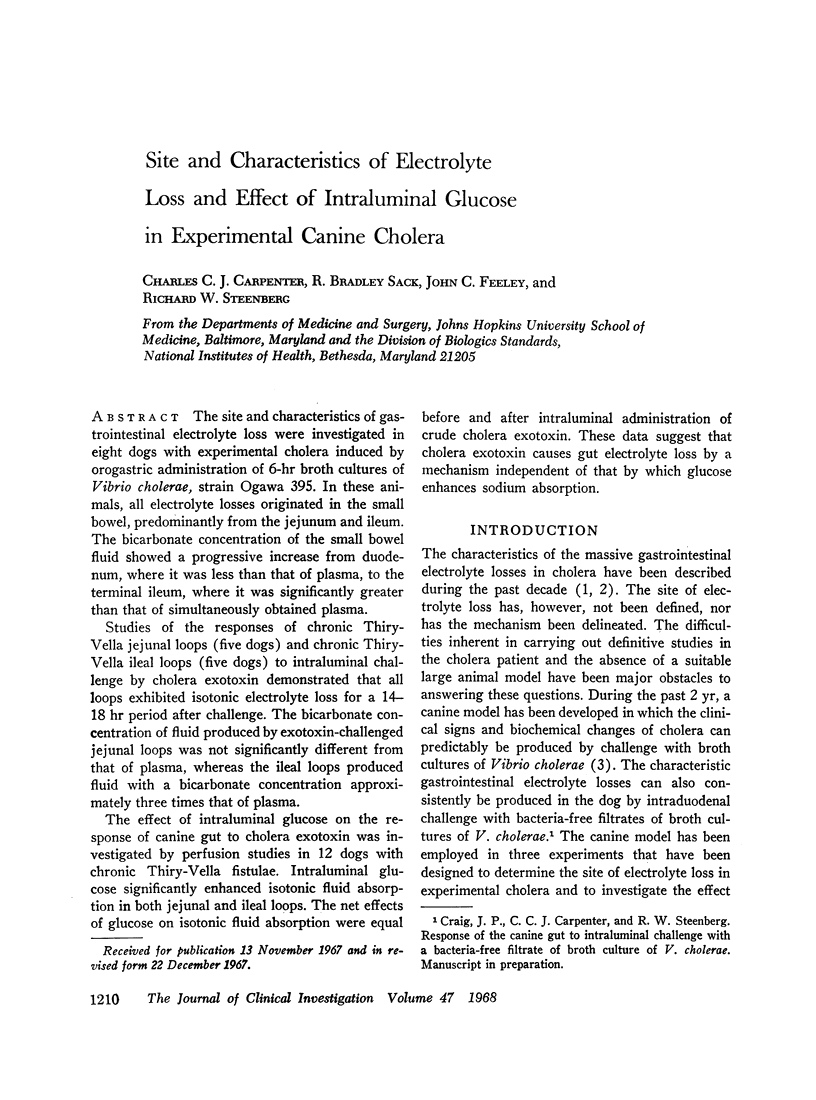
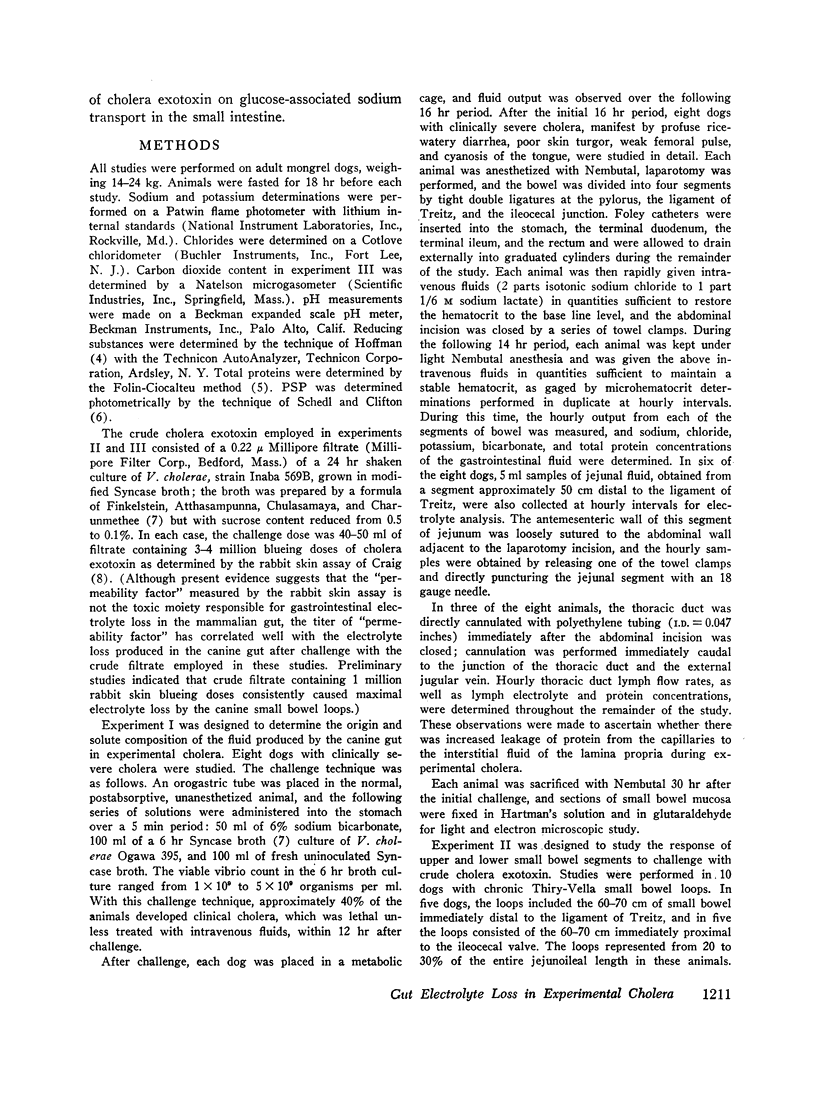
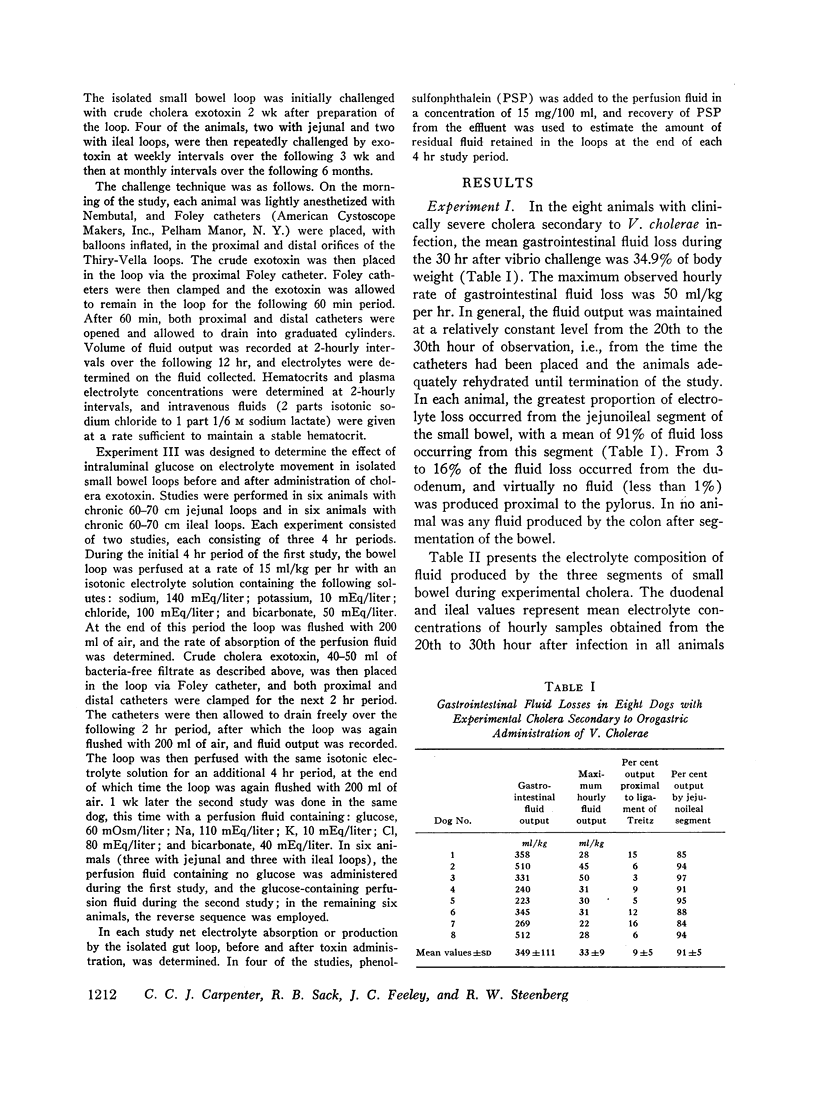
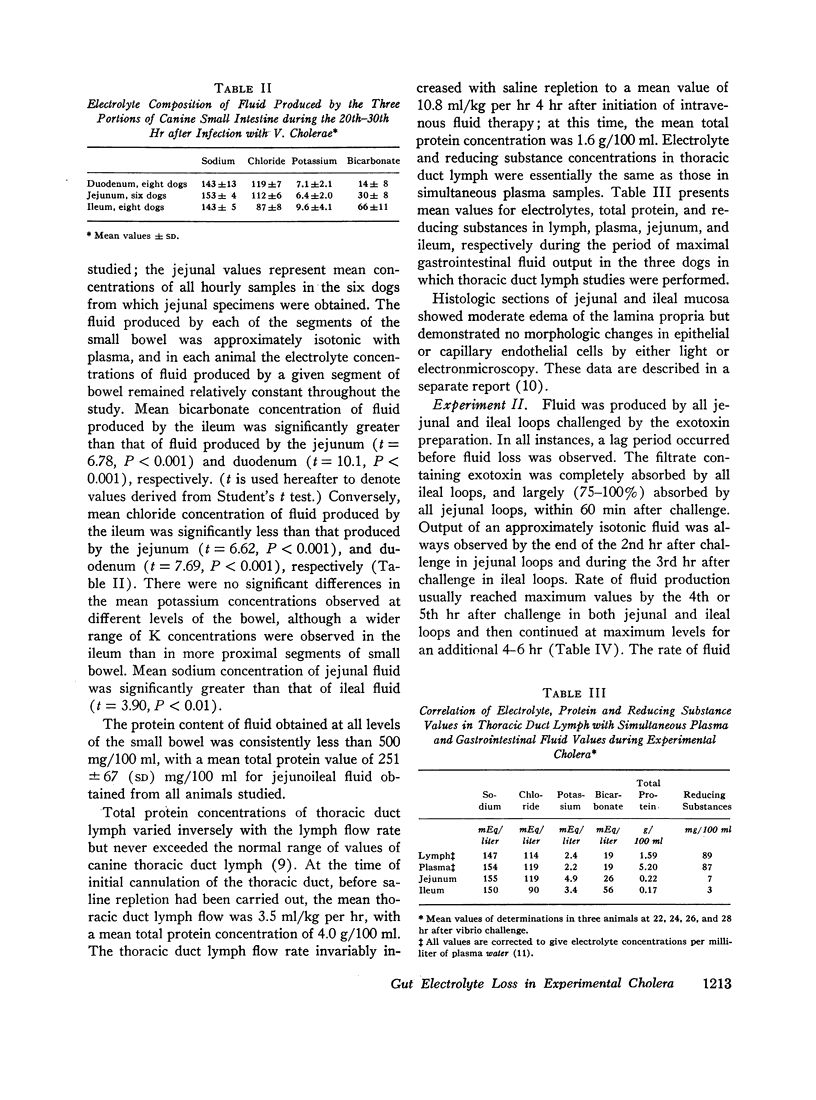
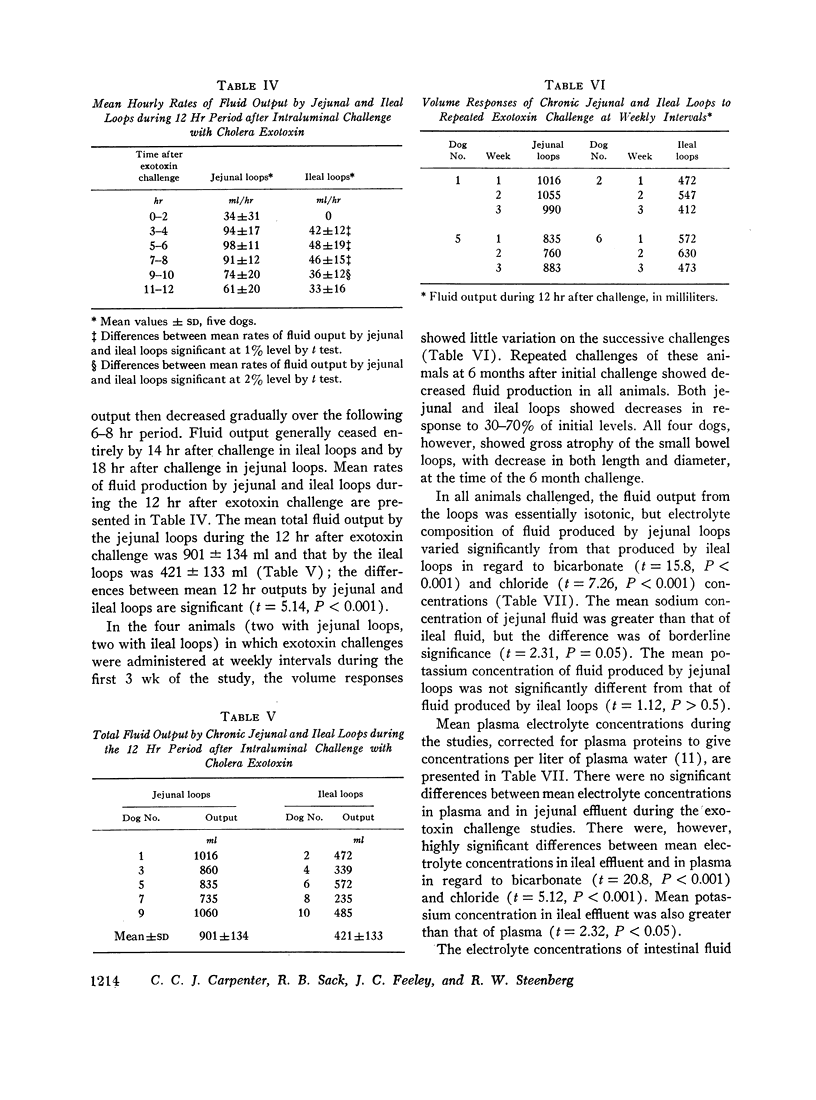
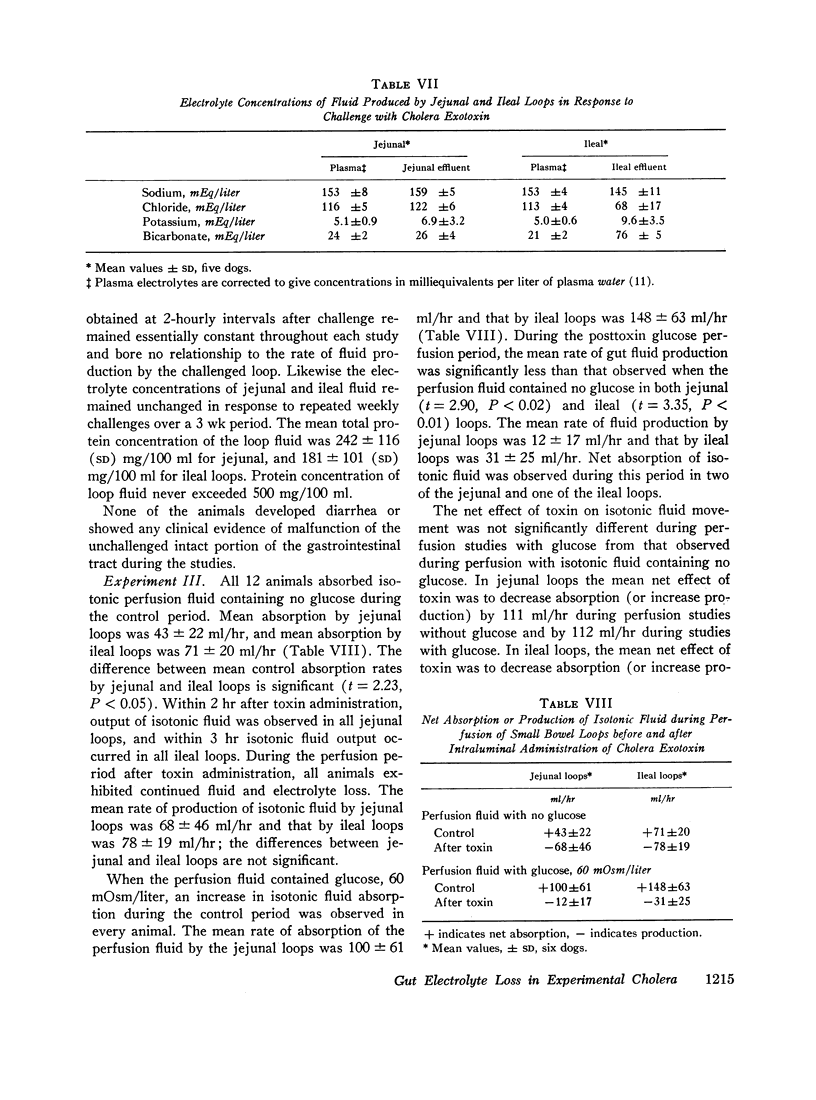
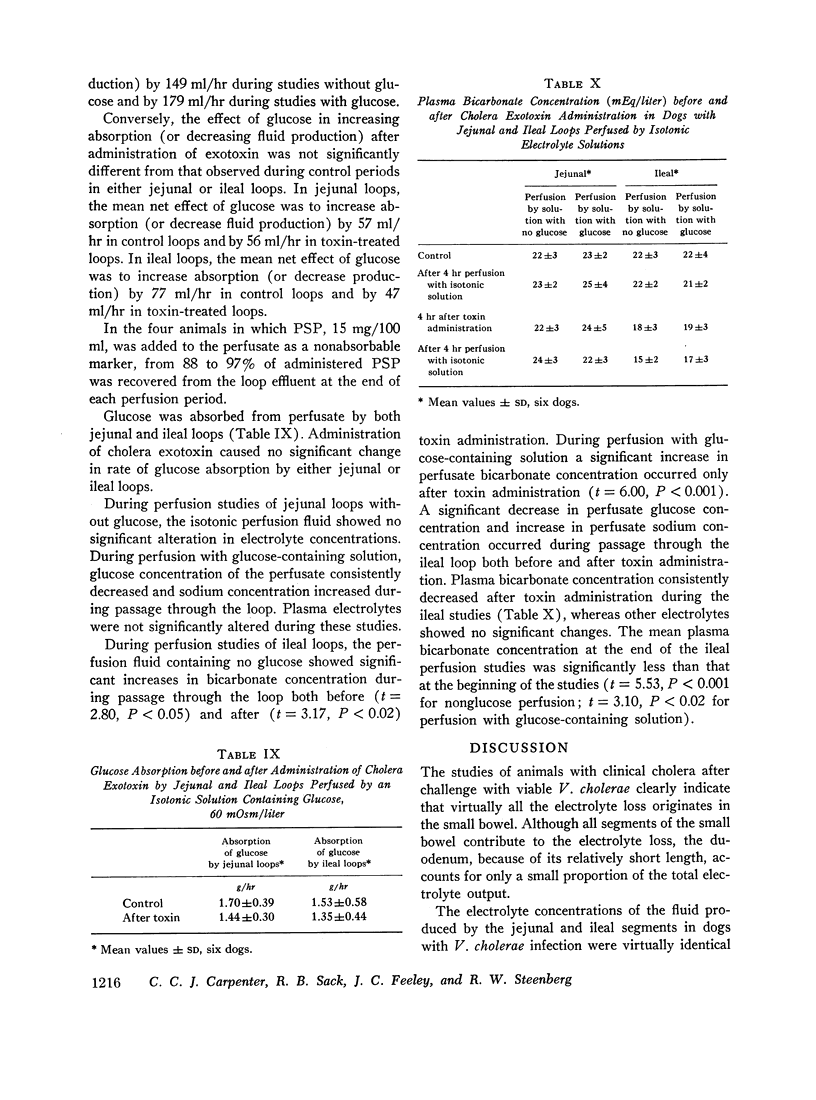
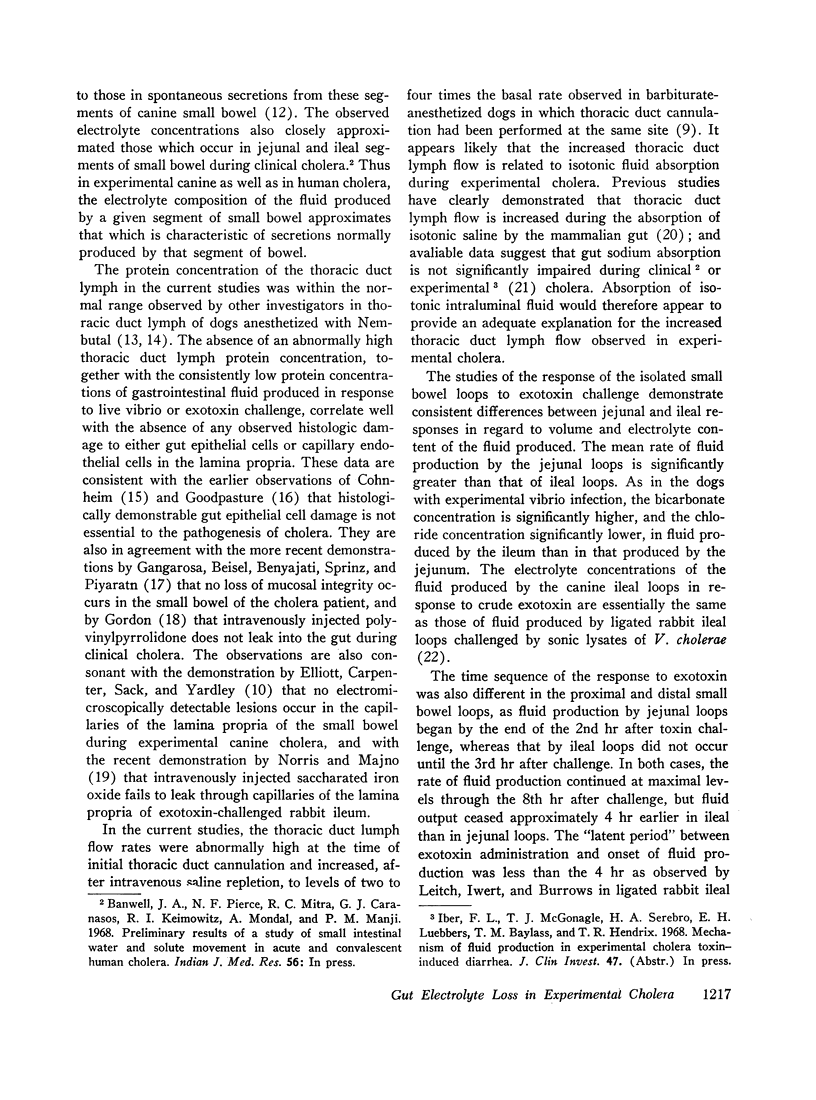
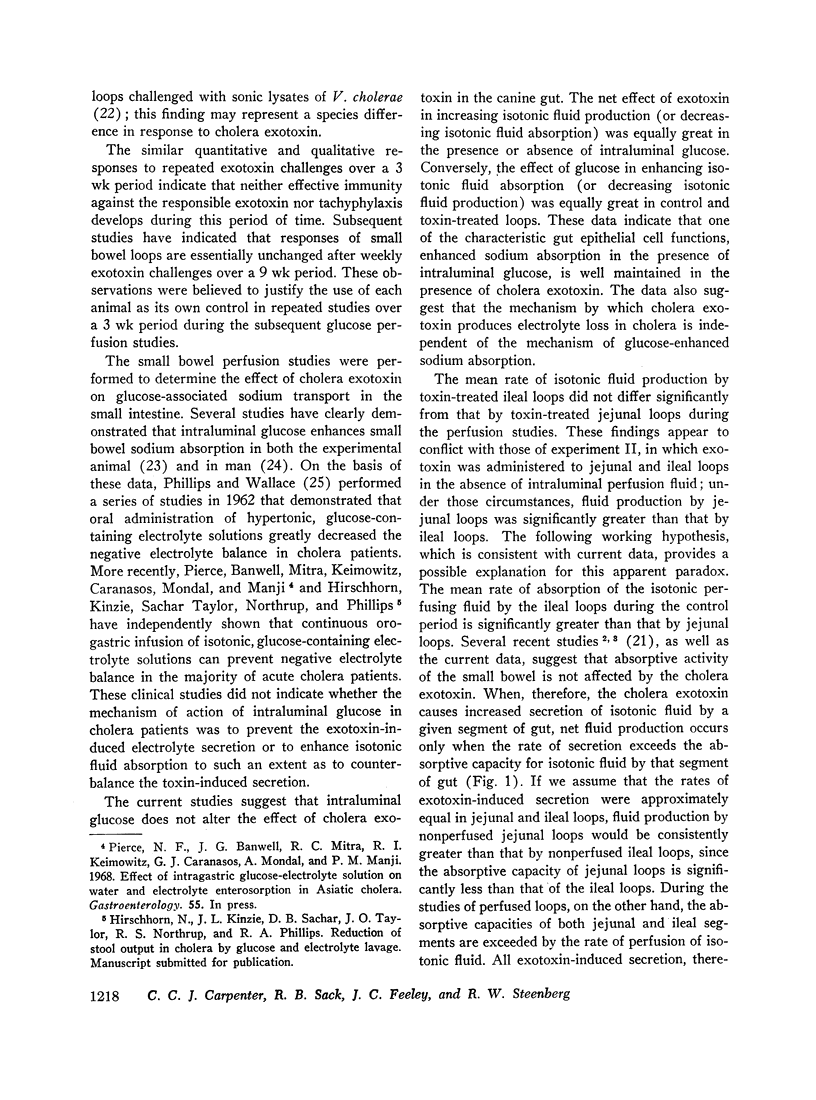
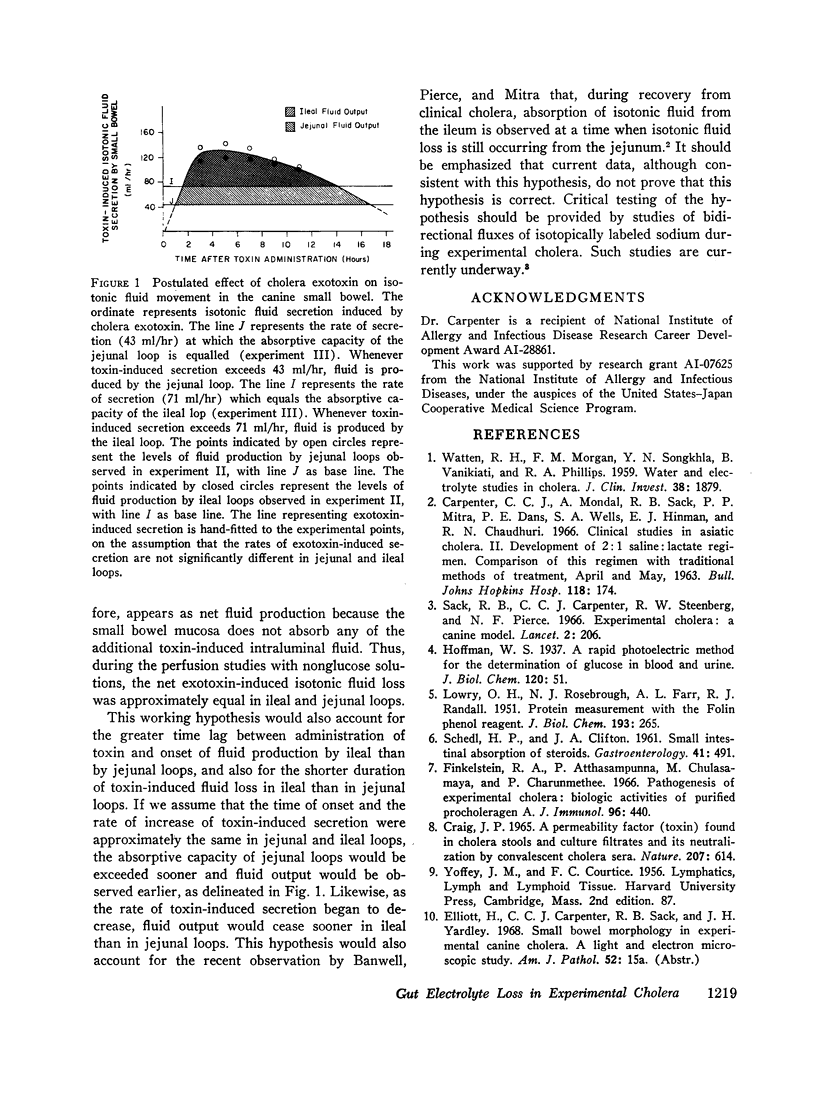
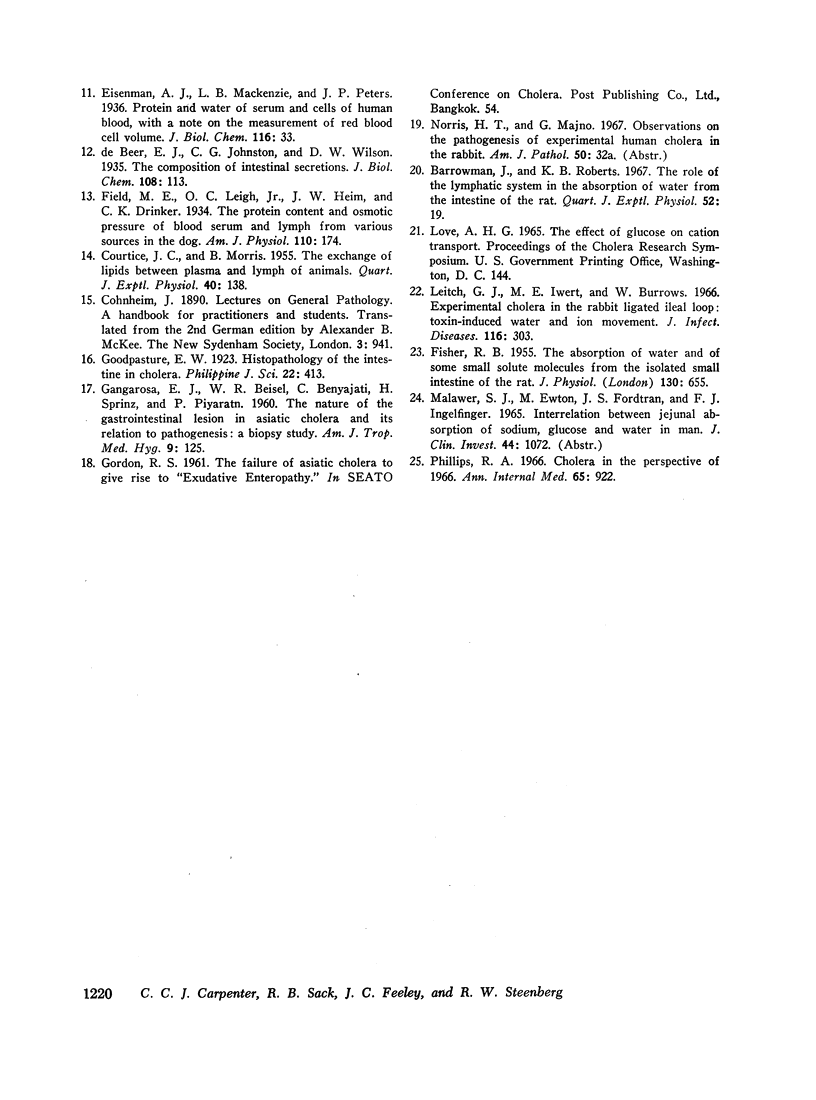
Images in this article
Selected References
These references are in PubMed. This may not be the complete list of references from this article.
- COURTICE G. C., MORRIS B. The exchange of lipids between plasma and lymph of animals. Q J Exp Physiol Cogn Med Sci. 1955 Apr;40(2):138–148. doi: 10.1113/expphysiol.1955.sp001105. [DOI] [PubMed] [Google Scholar]
- Craig J. P. A permeability factor (toxin) found in cholera stools and culture filtrates and its neutralization by convalescent cholera sera. Nature. 1965 Aug 7;207(997):614–616. doi: 10.1038/207614a0. [DOI] [PubMed] [Google Scholar]
- FISHER R. B. The absorption of water and of some small solute molecules from the isolated small intestine of the rat. J Physiol. 1955 Dec 29;130(3):655–664. doi: 10.1113/jphysiol.1955.sp005433. [DOI] [PMC free article] [PubMed] [Google Scholar]
- Finkelstein R. A., Atthasampunna P., Chulasamaya M., Charunmethee P. Pathogenesis of experimental cholera: biologic ativities of purified procholeragen A. J Immunol. 1966 Mar;96(3):440–449. [PubMed] [Google Scholar]
- GANGAROSA E. F., BEISEL W. R., BENYAJATI C., SPRINZ H., PIYARATN P. The nature of the gastrointestinal lesion in asiatic cholera and its relation to pathogenesis: a biopsy study. Am J Trop Med Hyg. 1960 Mar;9:125–135. doi: 10.4269/ajtmh.1960.9.125. [DOI] [PubMed] [Google Scholar]
- LOWRY O. H., ROSEBROUGH N. J., FARR A. L., RANDALL R. J. Protein measurement with the Folin phenol reagent. J Biol Chem. 1951 Nov;193(1):265–275. [PubMed] [Google Scholar]
- Leitch G. J., Iwert M. E., Burrows W. Experimental cholera in the rabbit ligated ileal loop: toxin-induced water and ion movement. J Infect Dis. 1966 Jun;116(3):303–312. doi: 10.1093/infdis/116.3.303. [DOI] [PubMed] [Google Scholar]
- Phillips R. A. Cholera in the perspective of 1966. Ann Intern Med. 1966 Nov;65(5):922–930. doi: 10.7326/0003-4819-65-5-922. [DOI] [PubMed] [Google Scholar]
- SCHEDL H. P., CLIFTON J. A. Small intestinal absorption of steroids. Gastroenterology. 1961 Nov;41:491–499. [PubMed] [Google Scholar]
- Sack R. B., Carpenter C. C., Steenburg R. W., Pierce N. F. Experimental cholera. A canine model. Lancet. 1966 Jul 23;2(7456):206–207. doi: 10.1016/s0140-6736(66)92484-6. [DOI] [PubMed] [Google Scholar]
- WATTEN R. H., MORGAN F. M., YACHAI NA SONGKHLA, VANIKIATI B., PHILLIPS R. A. Water and electrolyte studies in cholera. J Clin Invest. 1959 Nov;38:1879–1889. doi: 10.1172/JCI103965. [DOI] [PMC free article] [PubMed] [Google Scholar]



